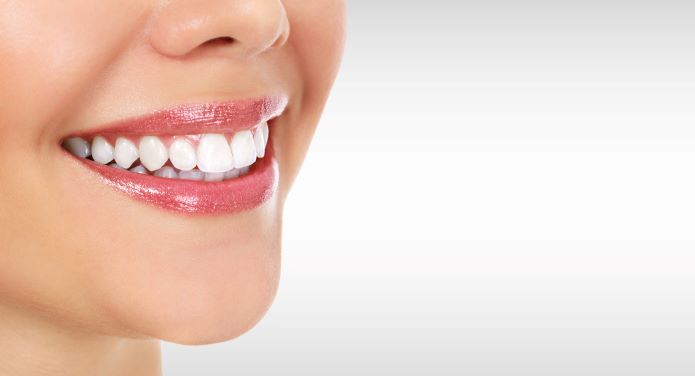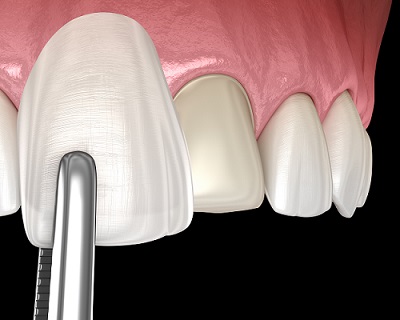One of the first things people notice about you is your smile. Having a great set of teeth can boost your confidence and help you become more social. On the contrary, having a smile you’re embarrassed about can severely impact your life in a very negative way. Since your teeth are not really something you can hide, you may find yourself turning into a recluse of sorts, not wanting to leave the privacy of your home due to disliking your appearance.
Luckily, cosmetic dentistry offers a variety of options to help enhance your smile. Whether you just want to whiten your teeth or want to go all in and replace the entire set, there are many procedures available for you to accomplish your teeth goals.
Cosmetic Teeth Whitening
Teeth whitening, also referred to as teeth bleaching, is a non-invasive and simple dental treatment that is used to alter the color of natural tooth enamel and is a great way to enhance your smile. Every celebrity you see has a set of blindingly white teeth, so it’s no wonder teeth whitening has become one of the most popular cosmetic dentistry procedures.
There are many reasons why one may seek out teeth whitening treatments. With time, teeth experience a normal wear of the outer tooth layer. Teeth can also become stained from things like coffee and even certain medications. Some people also experience something called fluorosis, which is excessive fluoridation during tooth development which leads to the yellowing of teeth.
While many opt for over-the-counter teeth whitening kits, getting a professional kit from a dentist will leave you with a much brighter smile. The typical in-office cosmetic whitening treatment will require two visits. At the first appointment, your dentist will make impressions (molds) of your teeth in order to create custom clear plastic trays. At your second appointment, the trays will be tried on to ensure a proper fit, in addition to any adjustments that may be necessary. These trays are to be worn with a special whitening solution either for 30 minutes twice a day or overnight for a handful of weeks depending on the degree of staining and the desired shade of white.
Halitosis: Causes and Solutions
Halitosis, commonly referred to as bad breath, is often due to poor dental hygiene but can also result from untreated dental problems like cavities or gum diseases. Diet, lifestyle choices, and certain health conditions can also contribute to bad breath. Managing halitosis involves a combination of professional dental care and personal hygiene practices. Regular dental check-ups are important to address any underlying issues that may contribute to bad breath. Additionally, maintaining good oral hygiene, such as brushing twice a day, flossing daily, and using mouthwash can help minimize halitosis significantly.
For persistent cases, consulting with a dental professional is essential. They can offer specific treatments or procedures that can address the root cause of halitosis, such as a deep cleaning or periodontal therapy. In some cases, your dentist might also recommend products designed to neutralize odor-causing bacteria.
Cosmetic Dental Crowns
Cosmetic dental crowns are caps placed over damaged teeth. Crowns are used to restore the shape of your teeth when fillings can’t fix the problem. These cosmetic crowns can be made out of material like metals, porcelain, ceramics, and resin. They don’t really require any special care other than consistently good oral hygiene.
Over time, teeth can become damaged from many different reasons, such as tooth decay, injury, or normal wear and tear. Teeth can lose their shape and size, so dentists will use tooth-shaped caps and place them over your problem teeth. The crown helps restore the tooth’s size, shape, appearance, and strength. Dental crowns are cemented into place and covers only the visible part of the tooth.
A cosmetic dental crown can typically be performed in two visits to the dentist. During the first visit, the dentist will examine and prepare the damaged tooth/teeth. X-rays are taken of both the tooth and the bone around it. In some cases, your dentist may need to perform a root canal before the dental crown procedure if there is tooth decay, injury to the tooth’s pulp, or a risk of infection. The tooth receiving the crown will then be filed down to make space for the crown itself, with the amount being filed dependent on the type of crown you are getting. After this, the dentist will make an impression of your tooth and the teeth above and below it in order to ensure that the crown won’t affect your bite. This information is sent off to a dental laboratory where they customize the crowns for you. At the second visit, the dentist will place the permanent crown on your tooth.
Cosmetic Dental Implants Versus Dental Bridges
Losing teeth is extremely common, with an estimated 69% of adults ages 35 to 44 have lost at least one adult tooth. In fact, by the age of 74, almost a quarter of Americans lose all of their adult teeth. Losing a tooth can cause someone to feel ashamed of their smile, but fortunately, cosmetic dentistry offers many solutions for this problem. The two most popular options for replacing missing teeth are dental bridges and implants.
Dental bridges are fake teeth held in place by the teeth surrounding your missing tooth. These are typically made from materials like plastic or porcelain and are designed to match your natural tooth color. Dental bridges can be used to cover just one missing tooth but can also be used to cover multiple missing teeth. Dental implants are artificial tooth roots often made from titanium. These implants are mounted into your jawbone with screws to hold a crown in place.
Both dental implants and dental bridges have many benefits, so it may be difficult to decide which method will work best for you and your smile makeover. A dental bridge is usually considered to be less invasive and more cost efficient than a dental implant. For a dental implant to work, it has to completely fuse with the jawbone through a process called osseointegration After osseointegration is finished, the temporary protective covering is replaced by a temporary crown. This crown serves as a template for the gums to grow and shape themselves in a natural way. Once this is over, the temporary crown is replaced by a permanent crown. This whole process takes up to 6 months, but it leaves the patient with a very stable and durable prosthetic.
Unlike dental implants, dental bridges don’t replace a tooth root. As previously mentioned, a bridge uses one or more surrounding teeth as a support on which a dentist can attach a crown to fill the missing tooth space. The procedure takes much less time than a dental implant does. In addition, dental bridges are more likely to be covered by insurance.
The downside to dental bridges is that they must be replaced every 5 to 7 years, they can damage the healthy teeth around the missing tooth, and can cause more cavity and tooth decay in surrounding teeth compared to dental implants. There are many factors that play into deciding which option is best for you, so it is wise to consult a dentist that can help you figure out which choice is right for you. Cost, the number of missing teeth, time, and overall health all factor into this decision for your smile makeover.
Cosmetic Dentures
Not only do patients want their teeth to function properly, but they also desire a great-looking result. Many people forget that dentures are not just for function, as they are a massive part of people’s lives which includes caring for one’s appearance. Having inadequate fitting and looking dentures can negatively affect the quality of one’s life, which is why it’s so important to find a highly qualified cosmetic dentist to create your dentures.
Cosmetic dentures are a removable replacement for all or part of your missing teeth and are designed to look and feel like natural teeth. Traditional dentures are usually much more noticeable, and the people who wear them often have issues with speech and eating.
Since traditional dentures sit on top of the gums, they fail to stimulate the underlying bone which causes it to deteriorate. In addition, bone density will also be lost due to inactivity. Traditional dentures also put an uneven strain on your jaw which can lead to discomfort. When your jawbone begins to shrink, the dentures will start to sit further into your mouth. Denture sinking will cause your facial features to wrinkle, making you look older. As a result of your jaw not operating properly, you may also develop Temporomandibular Joint Syndrome (TMJ).
Cosmetic dentures can fix these problems and restore facial anatomy, as this type of denture can recreate the lost bone structure by being supported by implants or the jawbone itself. When a dentist replaces missing teeth with implant-supported cosmetic dentures, the patients are successfully able to chew and speak properly. The added base material involved in cosmetic dentures are what sets them apart from traditional dentures. Cosmetic dentures are the right choice if you are looking for a complete smile transformation.
Cosmetic Dentist Near You
Consult your local cosmetic dentist to discuss which smile makeover options are right for you and your teeth. Since cosmetic dentistry is not often covered by dental insurance, it is important to discuss the financial aspects of theses treatments and procedures as well. If you are looking to change your life for the better, a great place to start is your smile.




